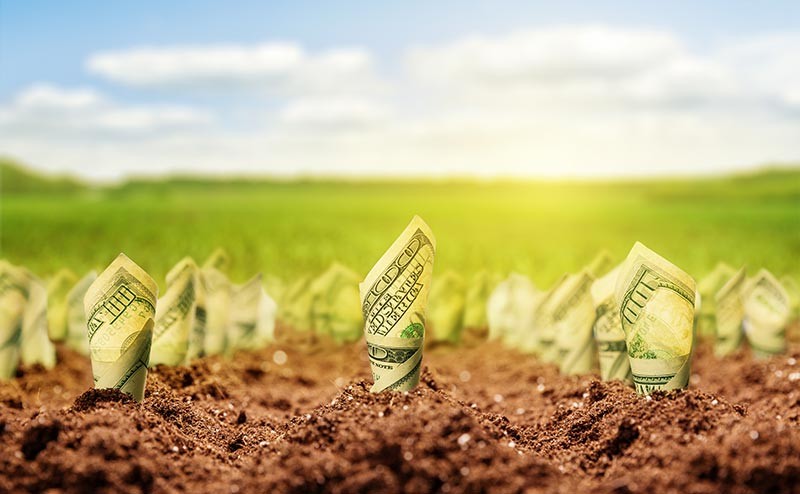
MAKING CENTS — We’re Not in the Ditch Yet
Economic growth in the final quarter of 2015 came in slightly below the modest expectations of most economists (including myself), increasing at less than 1 percent annualized rate. That marks the slowest pace of growth since the first quarter of last year, which was hampered by harsh winter weather, port disruptions and seasonal adjustment issues.
Growth slowed across all major categories, indicating a loss of momentum that leaves most economists expecting economic growth to slow to around 2 percent in 2016.
During my travels this year, I’ve been getting a lot of comments about aging and frailty — not about me personally; they refer to the status of our current U.S. economic expansion, which, if you recall, began in the second quarter of 2009. Some suggest that the best days of the current business cycle are behind us and that the economy is vulnerable to a potential market decline promulgated by oil prices and what’s happening in Asia.
Yet there are plenty of reasons to reject such a dark prognosis. While old chronologically, the current expansion is still somewhat young at heart. Recent maladies may be transitory and not chronic. The financial system is far healthier than it was eight years ago, making a repeat of global contagion far less likely. So let’s not push the panic button on the basis of a few difficult weeks in the financial markets.
FACING THE HEADWINDS
Among the reasons for the relatively tepid market performance are some important headwinds. Chief among them is the de-leveraging of American households, necessitated by the credit crash of 2008. That process has evolved nicely with the ratio of household debt to household income now at a 15-year low. Families are finding room in their budgets for additional spending, which should add momentum to growth. The same can be said for local governments. The deep recession required substantial belt-tightening and while public finances are still challenged, the public sector has been adding solidly to GDP growth for the past two years.
Job creation also has accelerated over the past two years, deepening and broadening the spending base on which the economy depends. The financial foundation in the United States has largely been repaired. Credit conditions are much more supportive of growth than they have been in some time. The Federal Reserve has been exceptionally helpful, banks are very well capitalized, and loan growth has been strong.
The U.S. economy also has been hindered by two other short-term headwinds. The first is the steep decline in the energy industry. Demand for the equipment and expertise that fuel exploration and extraction has diminished substantially. This has been harmful to the petroleum industry, but that sector accounts for a modest portion of U.S. economic growth, and the worst of the correction is likely behind us.
Speaking of the price of oil, as anyone who ever passed Econ 101 can tell you, it is highly dependent on supply and demand. The United States is producing more (and importing less). The lifting of Iranian sanctions will lead to more supply. Reports have indicated a large number of filled tankers in the Gulf waiting to go somewhere. Concerns about a lack of available storage have become an issue. Where are we going to put all this oil? However, in recent weeks, financial market participants have acted as if the price of oil were more a reflection of global demand. This logic can be circular. Stocks are down because the price of oil is down, but the price of oil is down because stocks are down.
The benefit of lower oil prices to energy consumers usually outweighs the pain for energy producers. However, we have not seen as much of a boost from lower gasoline prices as we would have in the past. Consumers may have been saving a large part of the windfall, perhaps because they are doubtful that gasoline prices would stay low.
Another possible explanation is that energy exploration is capital-intensive and has been supported by debt in recent years. With the price of oil having fallen further, there are increased concerns in the fixed income market of widespread defaults.
Data also suggest that energy-related debt has increased even more as the price of oil has declined. Pain has been felt, and will continue to be felt, by those who own that debt, but this doesn’t appear likely to be a systemic problem for the overall U.S. economy.
THE HOUSING MARKET
Housing starts are on pace to increase over 2016. Most analysts are looking for starts to increase to around 1.25 million in 2016, and for new home sales around 560,000. This would be an increase of around 12 percent for both starts and new home sales. Growth will likely slow, however, for multi-family starts.
Also, to achieve double digit growth for new home sales in 2016, the builders would have to offer lower priced homes (the builders have focused on higher priced homes in recent years). There has been a shift to offering more affordable new homes, but it takes time.
My guess is growth of around 4 percent to 8 percent in 2016 for new home sales, and about the same percentage growth for housing starts. Also I think the mix between multi-family and single family starts will shift a little more towards single family in 2016, which should mean more plant sales to landscape those homes properly.
Charlie Hall is Ellison Chair in International Floriculture in Texas A&M University’s department of horticulture. He can be reached at charliehall@tamu.edu.


 Video Library
Video Library 




















